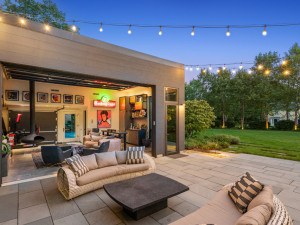Inside Worcester’s Development: What’s the Catch?
Boston’s next great ’hood has luxury condos, great restaurants, and affordable rents. So, what’s the catch?
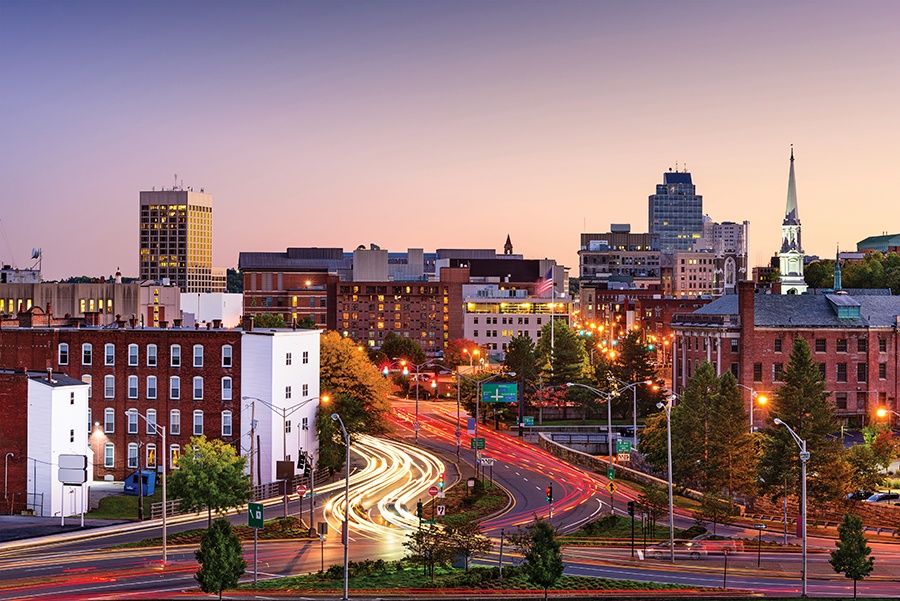
Shutterstock
Nothing symbolizes the revival under way in Worcester quite as pointedly as the new luxury apartment building at 145 Front Street. The grand unveiling is still a couple of weeks away on the blustery day in January when I come for a tour. The building’s director of operations, Michelle Fontaine, meets me out front, impeccably coiffed beneath a white hardhat, and waves me through a gap in the temporary fence. From the outside, the five-story building is gray, tan, and featureless, an architectural echo of the AC Marriott going up next door. I follow Fontaine through the cavernous garage where residents will park their cars, into the finished concrete lobby where a concierge will sit behind a retro-futurist black desk, and down halls dotted with unfinished extravagances. “This is our yoga room and spin studio”—a space where a rune-patterned accent wall evokes the cover of Dave Eggers’s The Circle while a giant TV plays exercise classes on demand—“and this room is our golf simulator,” she says, pointing to a nook where synthetic grass carpet is still lying in patches on the floor.
We step out into a massive central courtyard, crunching frozen grass. “I know it doesn’t look like much now, but underneath these trellis areas we’ll have grills and a fire pit, and toward where those trees are, that’s going to be an outside fireplace,” Fontaine says, “kind of like an outside living room with TVs and whatnot.” In the middle of it all is a pool. Another lawn will offer a bocce court.
There’s never been another building like this one in Worcester, and some locals wonder whether the 365 units will fill at the unprecedented prices the developer, Roseland Residential Trust, is asking. In a city where the average one-bedroom apartment rents for around $1,000 a month, 145 Front Street will start at $1,345 for a studio, with one-bedrooms starting at $1,625 and two-bedrooms starting at $2,100. A stretch in Worcester, sure, but a steal in Boston—or at least the one-bedroom is a lot less than my husband-to-be and I pay for our charmingly scuffed-up apartment in Jamaica Plain, a 45-minute commute from downtown, and which, need I say, doesn’t come with a golf simulator, a concierge, or a pool.
For the record, I love my sun-drenched apartment (so what if the windows stick and the wiring sometimes goes on the fritz); I love having my neighborhood bar across the street and some of my dearest friends down the block. But as a writer without a trust fund, I’ll never achieve the stability of homeownership in Boston. Sometimes, when it’s late at night—or almost tax season—I calculate how much less I’d have to work if I cut my cost of living by a quarter, or a third. I try to tally what I might be costing myself—in vacations, long-term savings, and peace of mind—by living perpetually at the edge of my means. And then I go on Zillow to some rural corner of New England and slowly surf myself to sleep.
The people who are pouring money into the city of Worcester know that people like me exist. When I asked Joe Donovan, vice president of the Boston-based MG2 Group, how his firm came to invest in Worcester, he said, “We haven’t drawn a direct correlation between downtown Boston and downtown Worcester to say, ‘Look, x percent of people or businesses have relocated from Boston because they got priced out,’ but we try to have a sense of where [rents] appear to be a value compared to the next-closest, comparable urban area.” In other words, skyrocketing prices in Boston have everything to do with MG2’s decision to dump $42 million into eight properties bordering the Common in Worcester, a cluster of blocks they’ve renamed “the Grid District,” which includes more than 500 apartments and tens of thousands of square feet of retail and restaurant space.
For most New Englanders, Worcester’s name still conjures abandoned mill buildings and pallid post-manufacturing gloom. But that reputation is overdue for a revision. In the past decade, the region’s second-largest city has razed and rebuilt its downtown, welcomed dozens of restaurants, and turned hollowed-out factories into trendy art galleries and industrial-chic cafés. In the central blocks known as CitySquare, new buildings shoot skyward behind barriers while banners covering just-finished properties broadcast retail and office space for rent.
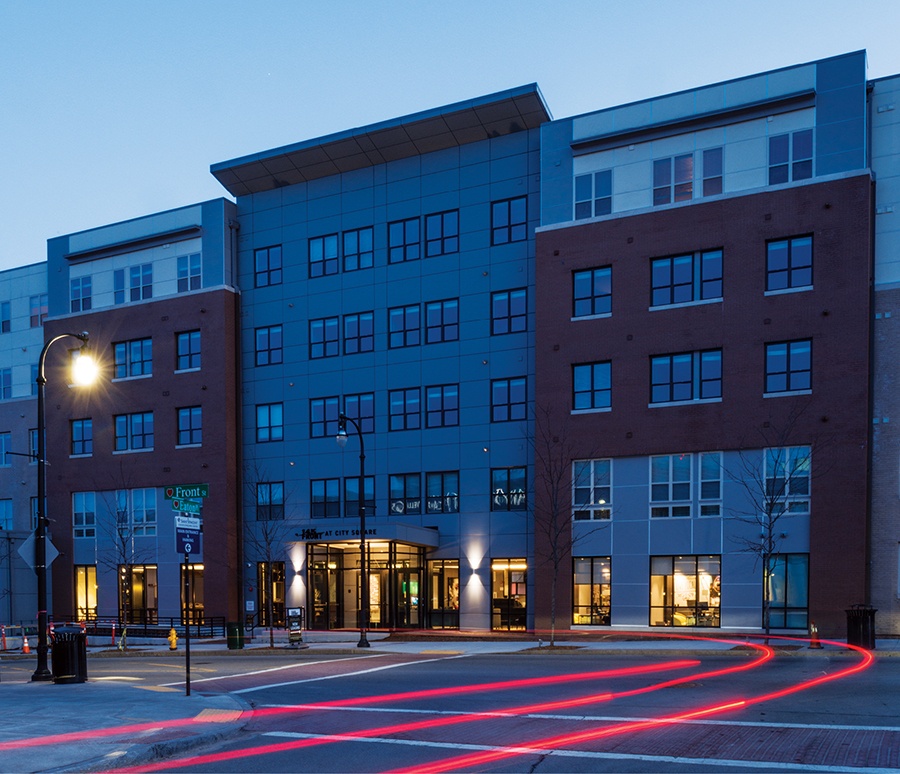
A new luxury apartment building in Worcester’s downtown “CitySquare” neighborhood has become a posh symbol of the city’s ongoing revival. / Photograph by George Osminkin
Much of the revival has been powered by the typical Gateway City combo of education and medicine, or “eds and meds”: Worcester is home to nine colleges and universities—including Worcester Polytechnic Institute, which has become something of a startup hub—and two hospitals, as well as the UMass system’s medical school, a beacon for biotech firms. But the city has also seen an uptick in manufacturing—for example, the expansion of the iconic Table Talk Pies—and a major increase in culture and tourism, such as the 2016 acquisition of the Worcester Railers, a pro hockey team. CSX Transportation added to the rail yard in town; JetBlue will be flying direct from Worcester to New York’s JFK starting in May; and both major political parties will descend on the self-proclaimed “Heart of the Commonwealth” to stage their state conventions this year. By every metric, Worcester is ascendant: Property values are at an all-time high; officials have courted $2.6 billion in recent construction, with more than $300 million already in the works; and the city is finally drawing new residents after losing them for much of a century, on track to crack 200,000 for the first time since 1950.
Perhaps Worcester’s best-selling point is its ability to provide a hip, urban lifestyle at prices the hip, urban center to the east can no longer offer. In December, Worcester sold its old courthouse to Boston-based Trinity Financial for conversion to apartments, half of which will be targeted toward artists to use as live-work spaces at (as-yet undetermined) affordable rates. In January, the first Whole Foods opened nearby. This spring and summer, the city is planning an $11 million makeover of Main Street, complete with bike lanes, ornate lampposts, and brick-banded crosswalks to convey that elusive walkable vibe. It’s a truth universally acknowledged that artists, bike lanes, and Whole Foods are catnip for yuppies, and slowly, Bostonians are making landfall in Worcester. Here in central Massachusetts, the tale of Boston’s housing crisis looks like the story of Worcester’s comeback—one of the more miraculous and unexpected revival stories the state has ever seen. “There are going to be people who need an alternative—who want some of the same advantages but can’t afford to live in Boston,” City Manager Edward Augustus Jr., Worcester’s top official, told me. “We think we can offer them a great place.”
Before Worcester could go from bust to boom, Boston had to go from boom to breaking point. When Sarah Shampnois and her friends, all recent graduates of Worcester’s Clark University, founded a theater company in Boston’s South End in 1998, the neighborhood was still a good place to make edgy, unprofitable art. Boston’s historical gayborhood was the most bohemian stretch of blocks north of New York’s East Village, the beating heart of Boston’s creative scene. In the preceding decades, painters and sculptors had transformed the old warehouses lining Harrison Avenue into live-work spaces. Though the neighborhood was changing by the late ’90s, it was still possible to find artists inhabiting airy lofts for around $1,000 a month and fledgling theater companies drawing young crowds.
Almost 20 years later, the group Shampnois cofounded, Company One, still has a foothold on Tremont Street, having outlasted everything that drew it to the South End. In 2007, this magazine ran a piece about the yuppie incursion headlined “The South End Is So Over.” (The title echoed that of a popular local blog, written by a gay neighborhood stalwart, which ran from 2006 to 2008.) Today, the area around Harrison Avenue—or “SoWa,” as it’s been rebranded—still promotes itself as Boston’s arts district, but few artists can afford to live there now that the average one-bedroom rents for roughly $2,400 a month. “It’s almost past the yuppie family phase and into the empty-nester phase,” Shampnois laments. “I don’t know what comes after that.”
We’re sitting in the kind of restaurant you find in the South End these days, with exposed-brick walls, copper sconces, and a bar cut from an elegantly knotted piece of blond wood. I’m drinking a glass of red wine that the bartender described as created by “the son of the guy who basically saved Austrian wine,” who swears by “minimal interference in winemaking.” (I don’t know what this means, but the wine is delicious, so I’m pretty sure that it worked.) But of course, we’re not in the South End: We’re in Worcester, where Shampnois recently bought a two-bedroom condo for $85,000—a sum that might cover the cost of a medium-size closet in Boston, provided it isn’t too close to the T.
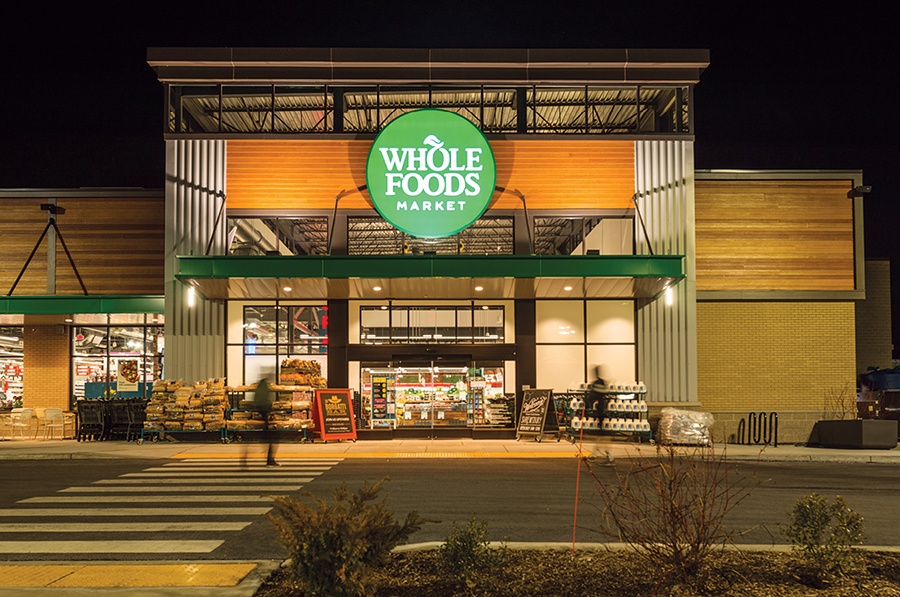
The Worcester area, which is trying to attract the yuppies who shop at Whole Foods in Boston, welcomed its first of the fancy chain markets in January. / Photograph by George Osminkin
Shampnois never planned to move back to Worcester. Her life was in Boston, and she’d long ago accepted that the hustle of living there would never yield enough for a down payment on a house. Over the years, she worked a hodgepodge of jobs to afford her life in the theater, the steadiest as a nanny for a family in Newton. By the time the kids grew up and the nanny job ended, Shampnois had moved 13 times to stay a step ahead of climbing rents in Allston, then Cambridge, then finally Jamaica Plain, where she had to take on a roommate to cover the bills. Around the time she turned 40, she realized that getting her own place and making her theater gig full-time mattered more to her than staying in Boston.
Financial necessities aside, after watching—and perhaps, in some small way, contributing to—the South End’s transformation, “I don’t want to be part of that happening again,” she tells me, reaching up to gather her wavy hair into a bun. “I felt wrong about buying a foreclosed house.” She started scouring the real estate market in the suburbs but couldn’t find anything to fit her budget. “My option was Worcester,” she says. “That was the closest I could get.”
So far, the move is working out. The commute is long, but she listens to audio books. The apartment is great, and Shampnois never tires of telling Boston friends what she bought it for. And the city itself has an energy—a blue-collar appeal coupled with trendy restaurants opening up every month. “It reminds me a lot of what J.P. and Dorchester were like 15 or 20 years ago,” she says. “It’s at a point now where it’s the kind of city and the kind of neighborhood that I like living in.”
That type of neighborhood chemistry may look organic from the outside, but in Worcester, the city government gets much of the credit. Developers and entrepreneurs I interviewed were eager to sing the administration’s praises. “They’ve been wonderful to work with,” Roseland chief legal officer Ivan Baron told me when I called him to ask about the Front Street apartments. “They might be even more excited than we are.”
That doesn’t mean everyone cosigns the priorities of Worcester’s one-party system, where, as a recent piece in CommonWealth magazine points out, everybody who’s anybody is not only a Democrat but also a protégé of Worcester-born U.S. Representative Jim McGovern. His former staffers include City Manager Augustus, Chamber of Commerce CEO and former Lieutenant Governor Tim Murray, and Mayor Joseph Petty. Critics accuse this clique of being too fast to embrace the future, sometimes at the expense of the city’s past. Across from the 145 Front Street apartments, for example, the spires of Notre Dame des Canadiens stand as proudly as ever despite the church’s broken windows. At one point it was slated for demolition, to be replaced by still more upscale apartments.
Most of the changes, though, do indeed look like progress to Worcester residents. Nearly half a dozen people told me about the triumphant trouncing of an ordinance banning food trucks, and how they loved seeing these icons of urban cool selling meals on the Common. “There’s a foodie scene that hadn’t been here before,” Augustus says, adding there is also a new bike-sharing program, so “When you come to the city in the summertime, there are yellow bikes everywhere.” To him, the bikes and the trucks are Worcester’s offering to local businesses trying to recruit workers, and its message to the nearly 40,000 college students who pass through the city, often heading to Boston: Why not stay in Worcester? “All of these things reinforce the optics and the ecosystem of living in an urban area, seeing people who are young and hip and open,” he says. “It’s part of what we’re trying to sell that we never did before.”
Of course, food trucks and bike shares alone won’t put Worcester in competition with Boston. Arguably one of the world’s great cities, Boston has few rivals in the country—and none in New England—when it comes to the fields where Worcester is seeking a foothold, such as education, medicine, and innovation. But Worcester’s chief advantage is Boston’s biggest drawback: the high cost not only of living but also of doing business in the state capital.
Some of the brightest lights in Worcester’s business community are Boston transplants. They include Jared Forman, the chef at Deadhorse Hill, the elegant locavore haunt where I sipped a glass of Austrian wine. He previously cooked at Watertown’s Strip-T’s, and members of his staff are alums of Brookline’s Ribelle and Cambridge’s Craigie on Main, T.W. Food, Giulia, and Loyal Nine. In 2016, the Boston Globe reported that restaurant leases average $10 to $30 per square foot in Worcester, as opposed to $40 to $50 or more in Boston and Cambridge, and liquor licenses cost $2,900 a year in Woo-town versus as much as $450,000 in Beantown. Forman went west because he wanted a place to experiment—somewhere he could afford to test bad ideas as well as good ones. Just under two years later, he and his business partners opened a second restaurant, a Korean-American spot called Simjang. He says, “[That] couldn’t have happened if I was still in Boston.”
In Worcester, “We don’t have to think about our rent,” he says. “We can focus on things that matter more to me—the menu, the drinks, caring about the people who walk in the door.”
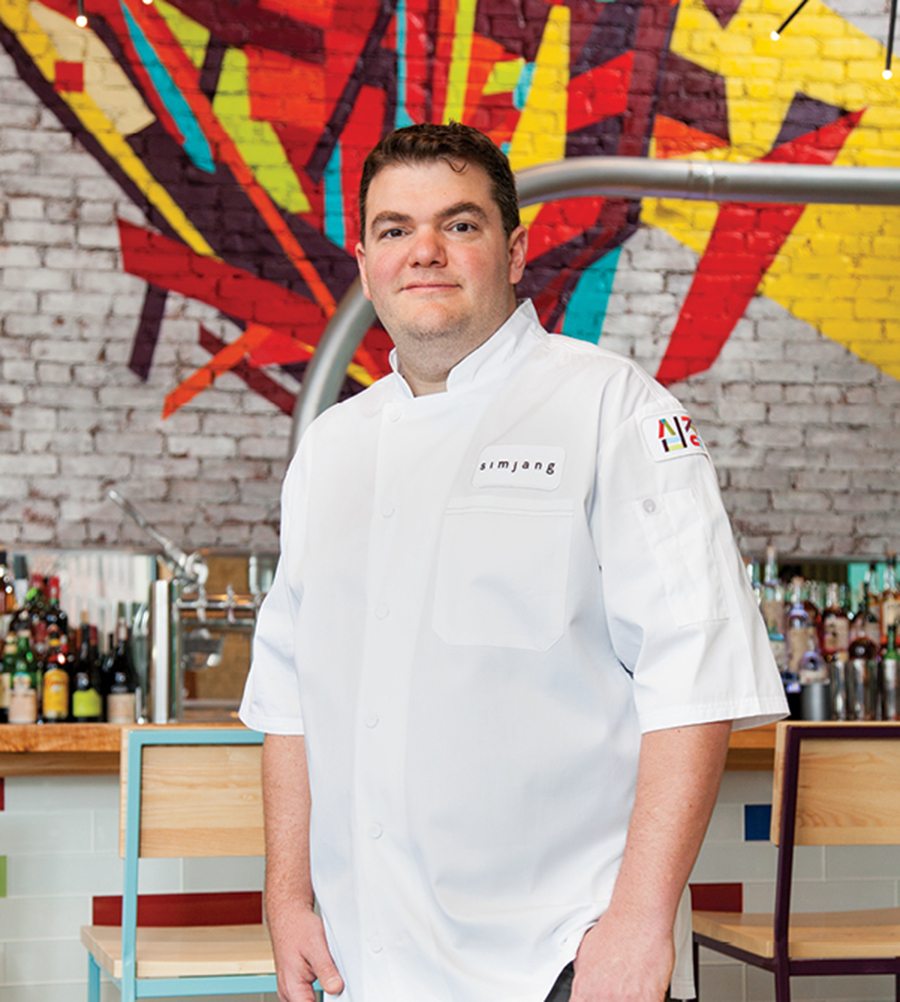
Chef Jared Forman opened his second restaurant in Worcester—a feat he says “couldn’t have happened” if he were cooking in Boston. / Photograph by PJ Couture
The dining scene isn’t the only place it pays to be a cheaper alternative to Boston. In more traditional sectors, Worcester is starting to attract the same industries that are flooding its eastern neighbor with unprecedented wealth, such as biotech and financial services. “If you look at the biotech sector, I could make the argument that Worcester and Boston are kind of a barbell,” City Manager Augustus says. “We’re not only an affordable alternative for housing but also for bio-manufacturing. Maybe a lot of the research is being done in Boston, but the research has to turn into a product, and instead of someone making that in North Carolina or China, we’re saying, ‘Hey, there’s an opportunity to make that in Worcester and have proximity to the researchers.’”
Murray, who was mayor before ascending to state politics, compares his hometown to Connecticut’s Metro-North corridor. “I went to Fordham University in the Bronx, and I saw how businesses getting priced out of Manhattan wanted to stay in the region,” he says. “Stamford, Connecticut, became the beneficiary.”
The president of the Greater Boston Chamber of Commerce, James Rooney, reached for a similar comparison when I called to ask what he thought about Worcester’s big dreams. The two cities “should be thought of as one major metropolitan area— think of San Francisco and San Jose,” he said. The smaller city should draft off the larger one’s momentum, capitalizing on proximity and relative affordability. To Rooney, this makes more sense than Worcester going head-to-head with its neighbor for big companies such as Amazon, which he calls “a recipe for disappointment.” Instead, “Have the headquarters-type activities occur in Boston and leverage off of that,” he says approvingly when I describe Augustus’s “barbell” metaphor. “Become part of the supply chain off of what is going on in Boston and thereby compete with other regions of the country and places in the globe as a region that can offer it all.”
It takes time and a lot of moving pieces to re-engineer an entire urban economy—and Worcester’s commitment to that process represents a departure from strategies that failed the city in the past. The most infamous was the Worcester Center Galleria, built on 34 acres of what had been Worcester Common and Washington Square in the late 1960s, a Band-Aid for downtown commerce when urban wealth was bleeding out to the suburbs. Unfortunately, the Galleria mall (later renamed the Worcester Common Fashion Outlets) had only a short heyday in the ’70s, followed by a long period of decline. By the ’90s the half-empty mall had become a depressing metaphor for the city whose downtown it dominated, and by the aughts, then-Mayor Murray was pushing to tear it down, declaring it “dead” and an unequivocal failure “as a shopping center and an urban renewal project.”
Finally, in 2010, Worcester-based Hanover Insurance bought the mall with plans to level it, making way for retail and residential projects that were dubbed CitySquare. The area has since absorbed $565 million in investments—including roughly $90 million in public dollars —that include both the 145 Front Street apartments and the new Marriott.
Though CitySquare is a big piece of the puzzle, this time, “We weren’t looking for one big project that was going to turn things around,” Augustus says. Worcester learned its lesson from the mall. City officials are still chasing big-ticket items—for example, they’re hoping to lure a minor league baseball team, the Pawtucket Red Sox, from Rhode Island—but they were just as eager in interviews to list their small efforts to make Worcester more inviting (read: more like a place people spoiled by Boston might live). The hope is that those projects, and the new bars and restaurants slated for the ground floor at Front Street and in the Grid District, will turn CitySquare into a true 18-hour neighborhood—like Boston’s South End, for example—where office workers loosen their collars at the end of the day and stick around for a bite or a beer, and maybe late into the night. It’s safe to say that the downtown isn’t there yet, but Worcester has the feel of a theme park version of a fresh, modern city—where officials and developers are waiting to see how many people will show up.
In the course of writing this story, I decided I should take the commuter rail to Worcester—to get a taste of what it would feel like to live in one city and work in the other, as power players on both ends hope more of us will soon do. It’s snowing when I wake up on the morning I’d planned to go; I can’t get a cab, Lyft and Uber are surging, and the T, once I trudge there, is running behind. By the time I reach South Station, my train is long gone, and the next one doesn’t leave for an hour and a half. I make the mistake of buying a bus ticket and spend the rest of the morning in I-90 gridlock, lightheaded from exhaust fumes and the caustic chemical smell of that blue liquid Peter Pan puts in its toilets. Four hours after leaving my Boston apartment, I finally arrive in Worcester.
Worcester’s revival may be premised on Boston, but the smaller city’s place in the larger one’s orbit depends on realities Worcester can’t do anything about. Exhibit A: transportation, which is nothing short of abysmal. The drive takes two hours in rush-hour traffic and the train chugs less than 50 miles in around 90 minutes—that is, when it’s running on time. Worcester officials spent years pitching the state Department of Transportation on the idea that they needed an express train if they wanted “millennials to live in Worcester, take advantage of the lower housing costs, hop on the train, and get to a job in Boston,” as DOT CEO Stephanie Pollack has put it. At last, they got their twice-daily, one-hour express train in 2016—but because it shares tracks with local service, the “Heart to Hub” direct line doesn’t leave until the tail end of rush hour. In other words, it does squat for the vast majority of commuters, only about 1,300 of whom take a train every day.
These infrastructural failures make the two cities feel farther apart than they are. Still, some Worcester residents are worried about the impending east–west migration and what it will do to their city when it comes. Cara Berg Powers grew up in Worcester and went to Clark, but she’s worked in Boston all of her adult life, now as the executive director of an arts-related nonprofit, the Transformative Culture Project. She briefly moved to the Hub, but after two years, “overage-ing my bank account every month,” she returned to her hometown, where she and her husband bought a triple-decker for $210,000 six years ago.
“I do see both cities as my city,” she says. And she’s alarmed by the housing crunch in Boston—the affluent young families who can no longer buy anywhere near downtown, and thus are flooding the area near her office in Roxbury, pricing out families who’d been there for generations. In her view, it’s only a matter of time before Worcester catches on. What’s an hour or 90 minutes on the commuter rail to people who are already riding the T 50 minutes from the western edge of Allston, or the bus an hour north from Roslindale? “This ripple effect is coming to Worcester,” she says. “I don’t think a lot of my friends who live here believe it, but they don’t see what I see every day in Boston.”
Berg Powers would welcome transplants who want to live in Worcester—but she worries about those who think they’re living in a suburb of Boston: “My concern is, I don’t know how engaged those people who are going to move into the new developments downtown will be in our community.” People who work in downtown Boston and live in downtown Worcester “are going to buy their socks at Primark and their groceries at Roche Bros. in Downtown Crossing,” she says. In that case, “all we’re getting is their rent, not their entertainment expenses, their grocery expenses…Worcester becomes a bedroom community.”
The recent arrivals I interviewed, however, seemed ready to embrace their new local identity—even if they still commuted to Boston. Take Lucas Donohue, a public school teacher in Watertown, and his wife, a manager at a technology company in Burlington, who’d rented in the South End for years before reluctantly moving to Stoneham, where they chafed against the suburban vibe. He missed “the community feel of walking down streets and seeing people you know,” Donohue says, and “the camaraderie when it’s nasty out and you’re shoveling together.” They knew they wanted to move back to the city. “I grew up in an agricultural community with not a lot of diversity,” Donohue says, “and that’s not what I want to give to our daughter.”
Donohue’s wife grew up in Princeton, just outside of Worcester, and the couple started exploring the city during visits to her parents on weekends. Pretty quickly, they were putting their home in Stoneham on the market and buying a five-bedroom house in Worcester for less than they’d have spent on a cramped South End condo. Donohue told me he wondered if Worcester would feel like a “little brother” to Boston, and half suspected they’d still be hitting their old South End haunts on evenings and weekends. “We never go into Boston anymore,” he says. Worcester has plenty of great restaurants and gets many of the same musical acts (albeit at awkward midweek times). “To go enjoy a night out, [Boston] doesn’t really register with us,” he says. “It’s ‘Where can we go in Worcester?’”
Jessica Walsh, a local photographer who moved from Boston 11 years ago, is similarly all in on her adopted hometown. She now owns a shop called Worcester Wares, where she sells every imaginable knickknack celebrating her city: “I <3 Worcester” pins and tote bags, “Heart of the Commonwealth” T-shirts and tea towels, bumper stickers that simply read “WOO.” The store’s buoyant kitsch is a mirror for Walsh’s irrepressible friendliness, and on the day we met she wore a red T-shirt with a suggestion that, in hindsight, seems pointed: “Say Nice Things About Worcester.”
These days, that’s not the tall order that it used to be, especially for those reaping the benefits of the city’s renewal. Walsh estimates that about 70 percent of her sales are to locals, and her store’s success struck me as a loose way to quantify a feeling that nearly everyone describes: “For a long time, we were in a negative cycle,” Augustus says. “We had an inferiority complex—‘Oh, that won’t happen, not here.’ But just like you could have a city that begins a decline and feeds off itself, I think we’re in a virtuous cycle, and the most important component of that is our own residents’ sense of optimism.”
So, is Worcester Boston’s newest suburb? If nothing else, its downtown is the newest hot neighborhood within easy range of Boston. “People say, ‘Well, do you want to be a suburb of Boston, or do you want to be independent of Boston?’” Augustus says. “I’m whatever you want me to be. I just want to be at the table.”
